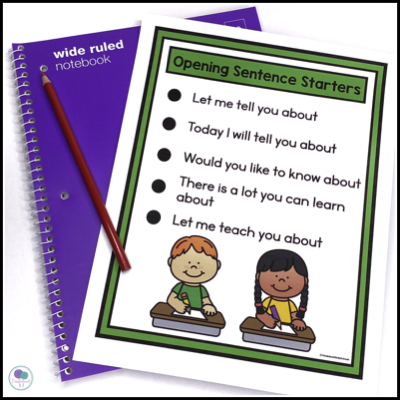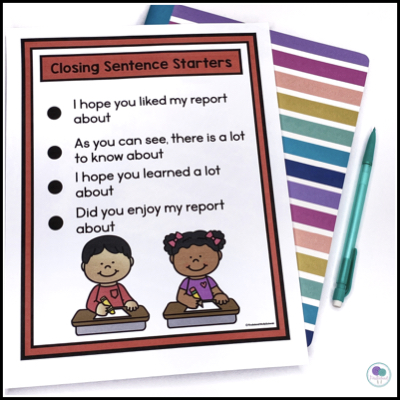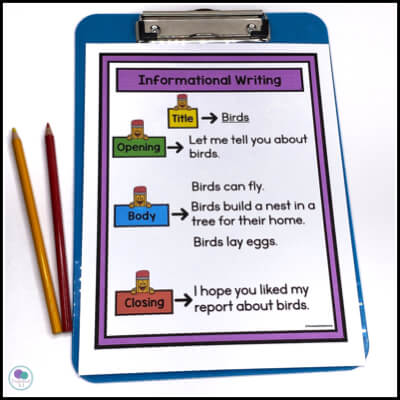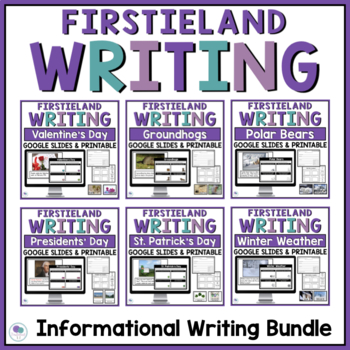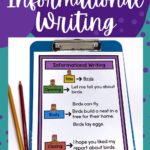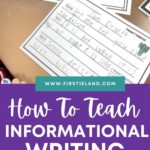
You're ready to tackle new genres of writing with your students but you're not sure where to begin. Let's dive in and find out exactly how to teach informational writing to children!
Imagine your principal walking in to observe your classroom and seeing your students actively engaged in research. The room is abuzz with learning! Children sitting together at the computer reading a story about animals that live in ponds. At another table, kids are filling out a graphic organizer about turtles. Continue walking around the room and you'll see students writing reports about animals and drawing illustrations. Yes! This can truly happen in your first-grade classroom!
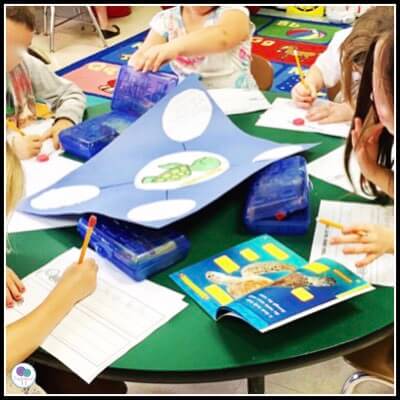
What is informational writing?
The definition of informational writing is when an author presents information about a topic. It's non-fiction writing that can be a report, an article, or even a biography. That may sound impossible for a first-grade student but when broken down step by step even the youngest student can produce a piece of informational writing.
Common core standards ask students to write informative/explanatory texts that name a topic, supply some facts about the topic, and provide some sense of closure. So how can we help students achieve this goal?
Step 1 – Begin with a topic
The first thing you need to do when teaching students about informational writing is to begin with an engaging topic. There are many nonfiction topics that young children find fascinating. Some examples of topics for informational writing are weather, animal habitats, the planets, polar bears, insects, and holidays. The possibilities are endless. Choose a topic that your students will be interested in for your first lesson on informational writing.
Step 2 – Research
Once you've chosen a topic, tell your students what they'll be learning about. Explain to students that you're going to show them how to research the topic and how to present that information in a report. Choose a variety of mentor texts that you can show the students and read to them.
You can also show students how to use Epic Books online to research a topic. They can even find videos on YouTube that will help them learn about a topic. Spend a day or two reading and learning about your topic as a class.
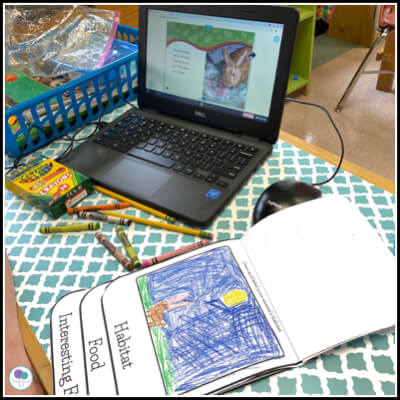
Step 3 – Brainstorm
As you and your students are learning about your topic, show students how to use a graphic organizer to gather their information. Make a large graphic organizer that you can complete together as a class. Then send students back to their seats to complete their own graphic organizer.
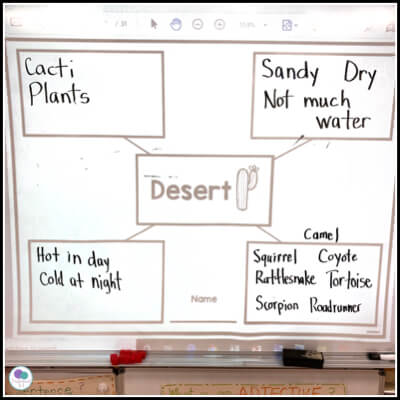
Show students how to choose a few simple words that will jog their memory on their organizer. Explain to them that the organizer is a place to gather their ideas and thoughts. It is not a place to write complete sentences.
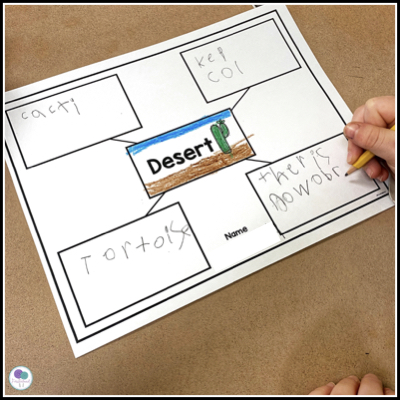
Step 4 – Include all the important information
Once you and your class have done your research and completed your graphic organizers, it's time to begin your report. This is where you'll model to students exactly how to do informational writing. It's a good idea to create a sample anchor chart that you can use as an example to help you model informational writing.
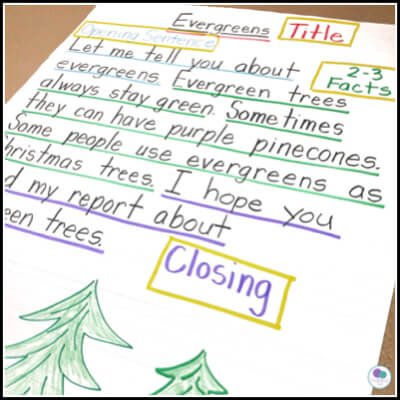
You may be wondering how do you write an informational paragraph for first grade? Your students should include the following information in their report:
Title
The title is what your report is about. It can be as simple as one word such as “Polar Bears”.
Opening Sentence
The opening sentence is the hook that will get your reader's attention. This is the first line of the report. It's a good idea to give students a few ideas that they can choose from for their opening sentence. My favorite opening sentence to use in first grade is: “Let me tell you about ___________.” Students fill in the blank with their topic. Here are a few examples of topic sentence starters:
- Let me teach you about……
- Today I will tell you about…..
- Would you like to know more about……
- There is a lot you can learn about…..
Click here to grab this free anchor chart for opening sentence starters.
Body
The body is the bulk of the report. This is where students will tell some of the things they learning about their topic. In first grade, students should supply 2-3 facts about their topic. This is a great place for you to differentiate your expectations for students. Struggling writers might only write one sentence with one fact about their topic. On level and advanced writers could write two or three sentences telling several facts about their topic.
Closing Sentence
The closing sentence is where students will wrap up their writing. This tells the reader that the report is finished. My favorite closing sentence to use with first grade is “I hope you liked my report about __________.” Students fill in the blank with the name of their topic. Here are some other options for closing sentence starters:
- As you can see there is a lot to know about ____________.
- I hope you learned a lot about ___________.
- Did you enjoy my report about ____________?
Click here to grab this free anchor chart for closing sentence starters.
Step 5 – Model
Before asking students to write their own report, it's important to model each step for your students. Grab this free anchor chart to help you model the steps for informational writing.
Use a large piece of chart paper and show students exactly how to write the title and where it goes on the paper. Next show students your list of opening sentences and model how to write that in your report.
Show students how to refer to the graphic organizer when writing two or three sentences about your topic. Make sure to show them how to supply facts about the topic and how to write a complete sentence with a capital, spaces, and punctuation.
Finally, show students how to choose a good closing sentence to finish up the report.
Step 6 – Independent Writing
It's finally time for students to show you what they've learned. Pass out the graphic organizers that your students made and let them use these to help them complete their reports. It's a good idea to use a writing template with prompts when students are first learning how to do informational writing. These templates are differentiated for struggling, on-level and advanced writers to meet the needs of all students. They also include an informational writing rubric which makes grading a snap!
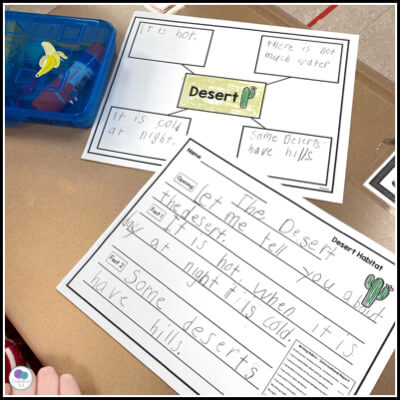
As your students are working, walk them through the process the first few times they try informational writing. Take them step-by-step as they write the title, opening sentence, body, and closing sentence. Walk around the room and check to make sure every child understands and give help as needed.
Step 7 – Illustrations
As a final touch, have your students create some kind of illustration to go along with their topic. This can be as simple as a crayon drawing or maybe a diorama of their topic. Be sure to include labels in the illustration explaining what everything is in the picture.
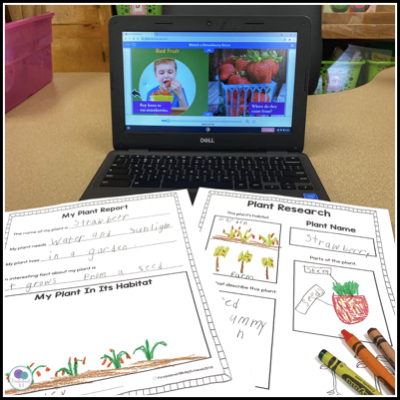
Step 8 – Revisions
After you've looked over your student's work and made corrections as needed, you can choose to have them do a revision of their work. To be honest, I didn't do this with every informational writing project in first grade. I found it to be a lot with young students and not always necessary. But at some point in the year, after they have had a lot of practice with this type of writing, it's a good idea to have your students do at least one or two revisions so they understand the process.
This bundle of 6 units has everything you need to teach your students informational writing in first grade. The topics are engaging for first grade and include non-fiction texts, Powerpoint presentations, pre & post-assessments, graphic organizers, differentiated writing templates, worksheets, mini-books, and crafts. Click here to take a closer look at this resource.
